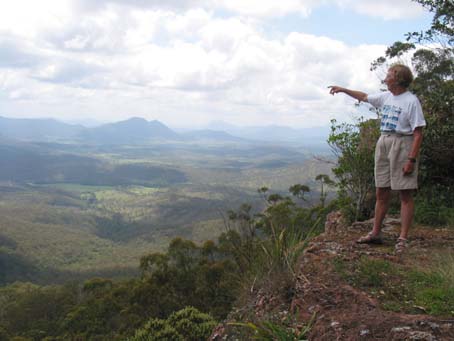
This piece of country is known as The Rim, a set of volcanic peaks encircling a green valley. Originally a rainforest area, the land was cleared for farming. The hills all around us are spikily dotted with volcano cores, vertical towers, likely of granite. Certainly there are cliffs here which climbers travel long distances to enjoy, usually by finding easy routes to the top and then rapelling down to the beginning of their climbs because the access from the bottom involves heavy and steep bush-walking within the rainforest.
We had planned to stay "a couple of days" at Elephant Rock, but Sue and Jaak, the owners, our hosts, were so very welcoming and made us so comfortable that the time simply slipped away for about ten days......Elephant Rock is named for the hill/mountain behind the resort, not particularly high, which has an intriguing shape every much like a sleeping elephant (except, of course that elephants probably don't lie down to sleep - anyone know the definitive answer to this one ?). It's set on a NE facing slope and so gathers the early morning sun, is provided with plenty of shade and can accommodate a dozen or so campsites and a dozen or so bed-and-breakfasters also. Visit www.elephantrock-naturally.com.au for more information. Thanks to Bill and Marlene for steering us here.......
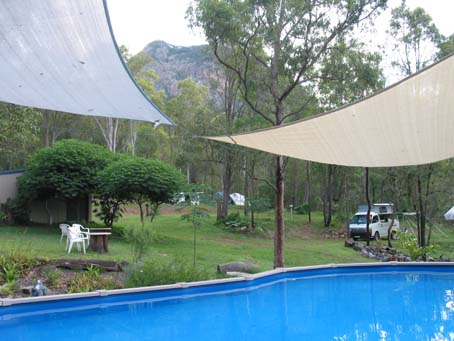
Behind the pool here, you will see Gertie II set amongst the gum trees. We took her out for an occasional jaunt but she was quite happy, as were we also, to rest awhile in this pleasant garden, playing the occasional game of boules or croquet, swimming in the pool marinating in the hot tub or watching the Australians make mincemeat of the West Indians in the Test Match - ahhh, TV cricket at last. In the background is the Elephant Rock itself.
The Rim is a large catchment area and below us in the valley is Lake Moogerah, an artificial lake formed by a large concrete dam. This is not for hydro-electric purposes but purely for water-storage. Presntly, owing to the low rainfalls of the last decade, the dam contained until recently only five percent of its full capacity, last reached in the 1970s, particularly in the disastrous year of 1974, when a third of the whole of Queensland was flooded during a series of typhoons. In Australian parlance, a pool of water retained by some sort of dam is itself called a "dam" and these are scattered about the country here, everywhere that could hold reasonable amounts of water. Elephant Rock has its own such dam, three-quaters empty, despite the recent rains here. Here's a picture of Lake Moogerah, or Moogerah Dam, with, in the background, Mount Grenville (its proper name) known as Elephant Rock.
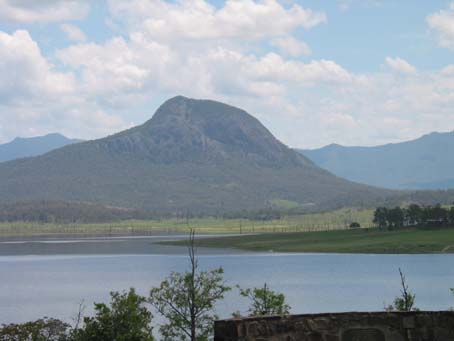
The high water level is apparent, where the trees stop, some 25 feet above the present water's edge. It will take a few years of "normal" rainfall, whatever this may be, to recover the dam's utility for irrigation. We are living in the centre of the mountain, in the bushland about 1/5 of the way up it, by the way.
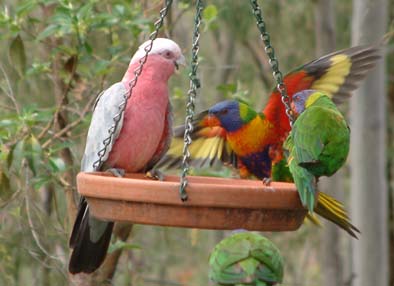
There's a Goanna, about 4 feet long, in residence here. He hangs around bumming food from us and while he shows every sign of being tame I don't altogether trust those sharp-looking teeth. Neither, it seems, do the magpies. These, notorious thieves themselves, provide the eggs which the goanna loves to rob from the nest and the birds gang up on the goanna attempting to drive him away. The magpies are always careful to be in front of their enemy because that long tail can whip around, stunning the bird which then becomes a nice little snack. These two magpies were harassing the goanna on the top of the water tank, which collects the roof drainage for our water supply, often the only water source for isolated settlements.
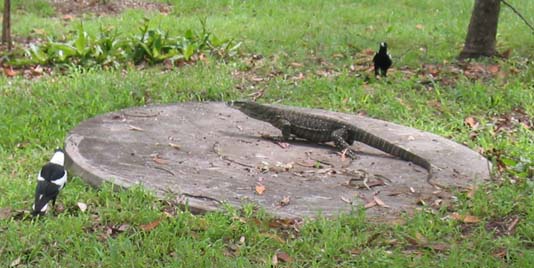
We've become fairly accustomed to the spiders here (never the flies though). Spiders are often 5" or more, leg-to-leg across (well, they sure have lots of flies to make themselves big !) and they turn up in every possible place - as do also the frogs, but that's another story. We haven't yet encountered the nasty red-backed spider whose bite is exceptionally dangerous and often fatal but we've been observing an interesting St Andrews' spider. This isn't particularly large, maybe 2" or so from leg to leg, but it decorates and festoons its web with fronds of spare webbing so as to give the appearance of a much bigger creature, hoping thereby not to be disturbed.by its rivals. The true legs are dark, the pseudo-legs are the white decoration, and this spider has been sitting above us at our and his breakfast table for the past week.
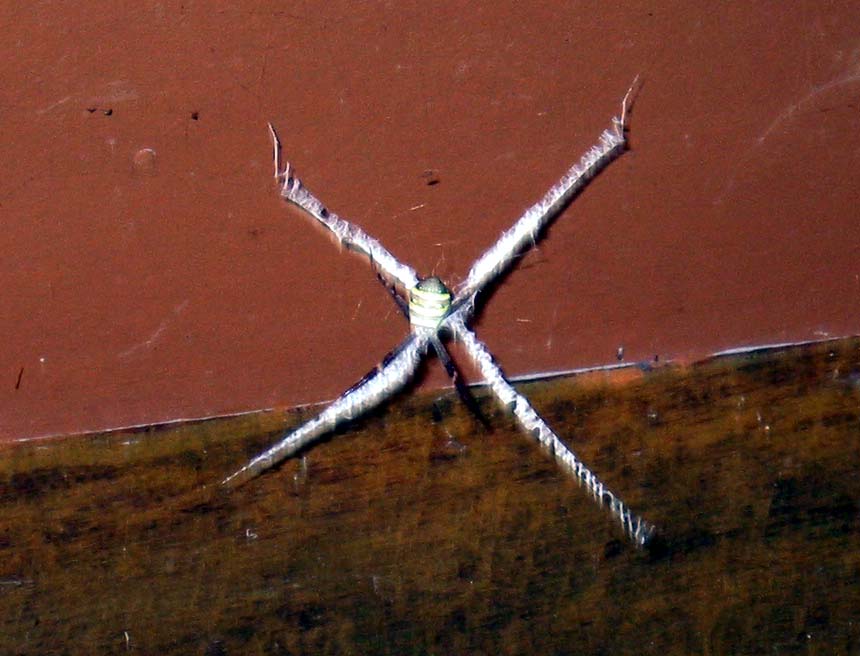
There's a strange tree which grows hereabouts. It's politically correct name is nowadays the Grass Tree, but that's nothing like so evocative as its previous common name, Black Boy, so-called because of its lean and watchful dark figure, complete with dreadlock hairstyling. These trees, standing anywhere from a foot to fifteen feet high, grow very slowly: only a half-inch or so a year. Naturally enough, they are a preserved plant and, while they may sometimes be removed by special permit only (and then not from the Park areas), the plants have to be registered and so on. We found a newly-formed mango plantation up in them thar' hills on one occasion and take leave to present also, especially for Baba, ve3kx, a picture of a mango tree for his delight......
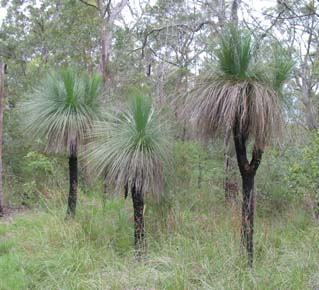
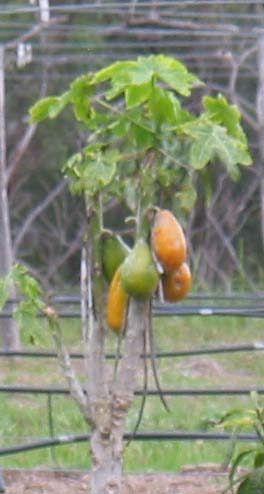
Halfway up The Rim are very often cliffs, those barriers to the pioneers in their attempt to cross the ranges into the Darling Downs, full of sheep pasture but alas, insufficient water as it turned out. Here's Shirley-Anne on the edge of a cliff known as Governor's Chair. Is that water-divining or is she chucking rocks over the edge ?
